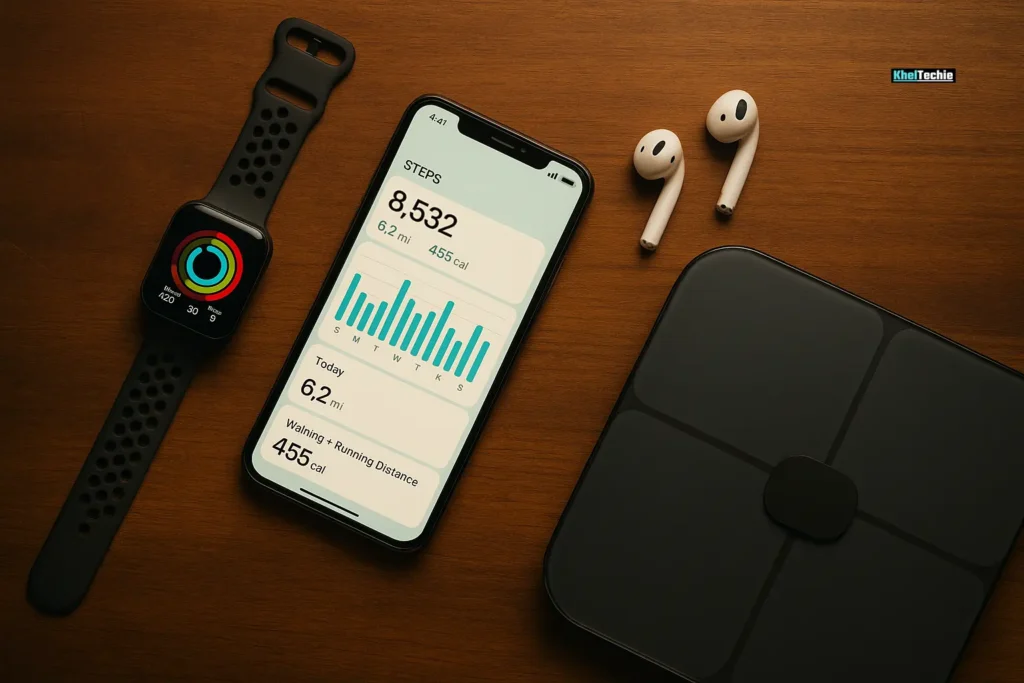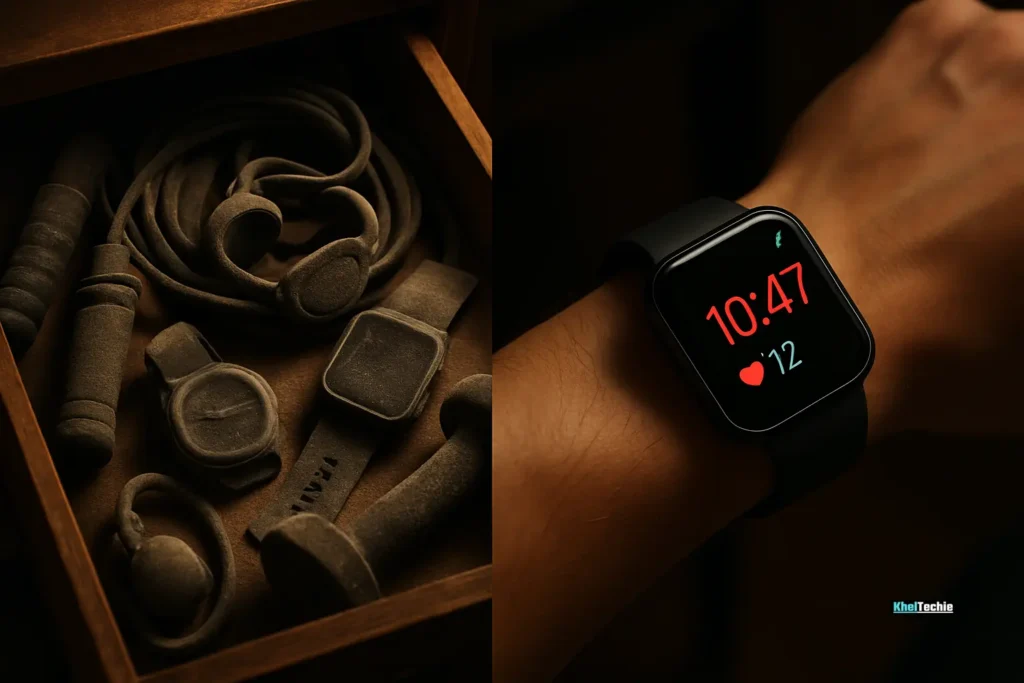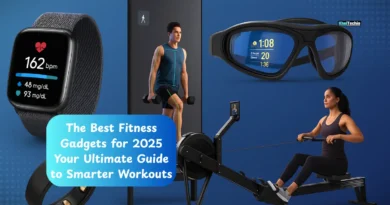How to Use Fitness Tech for Accountability: Unlock Consistency & Crush Your Goals
Why Staying Accountable Is So Hard?
You’ve bought the gym membership, downloaded the fitness app, maybe even splurged on a smartwatch. Yet, weeks later, your workout gear gathers dust, and your fitness goals feel like a distant memory, Sound familiar?
Staying accountable to your fitness goals is tough, especially when life gets busy. But what if technology could be your secret weapon? From wearable trackers to social fitness apps, the right tools can provide the structure and motivation you need to stay on course.
In this comprehensive guide, we’ll explore how to use fitness technology effectively to enhance accountability and help you achieve your health goals.
Also read – Best Fitness Gadgets for 2025

What Is Fitness Tech for Accountability?
Fitness technology encompasses devices and applications designed to monitor and improve your physical activity. These tools include:
- Wearable Devices: Smartwatches and fitness bands (e.g., Fitbit, Apple Watch) that track steps, heart rate, and sleep patterns.
- Mobile Apps: Applications like MyFitnessPal and Strava that log workouts, nutrition, and progress.
- Online Communities: Platforms where users share goals, progress, and support each other.
By providing real-time feedback and social support, fitness tech can help you stay accountable and motivated.

Why Accountability Matters in Fitness and How Tech Helps
Here’s the truth: most people quit their fitness routines within the first 3–6 months. Why? Lack of motivation, inconsistent habits, and no one holding them accountable.
Staying committed to fitness goals can be challenging, but technology offers tools to enhance accountability. Recent studies underscore the positive impact of fitness tech on physical activity levels.
A 2024 study in Digital Health revealed that users of fitness apps and wearables not only engage in more moderate and strength-training activities but also benefit from the social aspects of these technologies. Sharing progress and consuming health-related content on social media platforms linked to these apps can motivate users to maintain and even increase their activity levels.
Moreover, gamification features like leaderboards have shown promise in encouraging activity among sedentary individuals. Research analyzing Fitbit users found that those who were previously inactive increased their daily steps by about 1,300 steps after engaging with leaderboard features. This suggests that friendly competition and visual progress tracking can serve as powerful motivators.
In essence, fitness technology provides not just data tracking but also social engagement and motivational tools that collectively enhance accountability. By leveraging these features, individuals can find renewed motivation and support in their fitness journeys.

How to Use Fitness Tech for Real Accountability
Step 1: Choose the Right Tools for Your Goals
Not all fitness tech is created equal. Here’s how to pick what works best for you:
| Goal | Recommended Tech |
|---|---|
| Weight Loss | Smart scale, calorie tracker, activity bands |
| Strength Training | Smart gym mirrors, resistance band sensors |
| Running/Walking | GPS watches, heart rate monitors |
| Mental Wellness | Meditation headbands, sleep trackers |
If you’re new, start simple. One or two tools are better than five unused ones cluttering your drawer.
Step 2: Set Up Daily Reminders & Notifications
Most apps allow custom alerts, Use them wisely.
- Morning hydration reminder
- Midday stretch alert
- Evening reflection prompt
- Weekly goal check-ins
These small nudges keep you engaged and aware of your habits, even on busy days.
Step 3: Connect With Friends or Online Communities
Social accountability is powerful.
Many fitness apps let you:
- Share daily stats
- Join challenges
- Cheer each other on
Apps like Strava, MyFitnessPal, and Fitbit have active communities where users post runs, meals, and wins.
Step 4: Track Progress Visually
Seeing is believing.
Use apps that offer:
- Weekly summaries
- Monthly graphs
- Before/after photos
Visual feedback helps you recognize patterns like why you skipped workouts every Friday last month.
Step 5: Review Weekly and Adjust
Set aside 10 minutes every Sunday to review your data.
Ask yourself:
- Did I hit my step goal?
- Was I consistent with water intake?
- Did I get enough sleep?
This habit builds self-awareness and keeps you focused on long-term success, not just short-term wins.
Step 6: Integrate with Other Life Goals
Your health doesn’t exist in a vacuum.
Sync your fitness app with your calendar, productivity tool, or mental health journal. This creates a holistic view of your well-being.
For example, if your meditation app shows you’re stressed every Tuesday, maybe it’s time to adjust your workout intensity that day.
Step 7: Celebrate Small Wins
Every milestone matters, even if it’s just walking 10,000 steps for three days straight.
Some apps automatically reward streaks with badges or motivational messages. Others let you set mini-goals and celebrate when you reach them.
You can even link your achievements to rewards like:
- Buying a new playlist
- Treating yourself to a massage
- Taking a guilt-free rest day

Common Mistakes People Make When Using Fitness Tech
Even the best tools won’t work if you misuse them.
Here are the top 5 mistakes and how to fix them:
| Mistake | Fix |
|---|---|
| Overloading with too many apps | Stick to 1–2 core tools |
| Ignoring data insights | Review weekly summaries |
| Comparing yourself to others | Focus on your own journey |
| Relying solely on tech | Combine with real-life support (friends, coaches) |
| Not syncing devices regularly | Enable auto-sync to avoid missing data |
Also read – Best Fitness Tracker for Women in 2025

Conclusion: Your Turn, Start Using Fitness Tech the Right Way
You now know how to use fitness tech for accountability, Incorporating fitness technology into your routine can significantly enhance your accountability and help you achieve your health goals. By choosing the right tools, setting clear objectives, and engaging with supportive communities, you can stay motivated and on track.
The next step? Pick one device or app and commit to using it consistently for 30 days. Track your progress, reflect weekly, and don’t be afraid to tweak your approach.
Remember, Fitness tech isn’t magic. It’s a tool to help you build better habits, one step, one rep, one day at a time.
Frequently Asked Questions
Can fitness tech really help me stay accountable?
Yes! Studies show that people who use fitness trackers are more likely to meet their goals because they’re constantly aware of their progress.
Which fitness tech is best for beginners?
Smartwatches like Fitbit Inspire or Apple Watch SE are great entry points. They’re user-friendly and integrate with most health apps.
Do I need to spend a lot of money on fitness tech?
Nope! There are free apps like Google Fit, Samsung Health, and MyFitnessPal that offer robust tracking features without breaking the bank.
How do I stay motivated if my tech isn’t working?
Keep a backup log in a notebook or spreadsheet. Consistency beats perfection.
Can I use fitness tech for weight loss?
Absolutely, Pair a fitness tracker with a food logging app like Lose It! or Noom for full accountability.
Is it possible to become too dependent on fitness tech?
Yes, Balance is key. Use tech as a guide, not a crutch.
Are smart mirrors worth it for home workouts?
If you enjoy guided sessions and form correction, yes. Try models like Mirror or Tonal.
How do I share my fitness progress safely online?
Use privacy settings in your app. Only share what you’re comfortable with.
Can fitness tech improve sleep quality?
Yes, Devices like WHOOP or Oura Ring track sleep stages and give personalized recommendations.
Should I wear my fitness tracker all day?
Ideally, yes. That way, it captures accurate data about movement, heart rate, and sleep.




